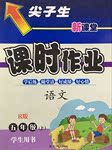题目内容
Kathy ______ some French while she was away on a business trip in France.
- A.picked up
- B.took up
- C.made up
- D.turned up
A
试题分析:考察动词短语辨析。A捡起;用车接;无意中学会;接受信号;康复。恢复;染上…;B占据,从事于,开始做;C化妆,编造,弥补,组成;D出现,调高;句意:当Kathy在法国出差的时候,无意中学会了一些法语。根据句意说明A正确。
考点:考察动词短语辨析
点评:动词短语是高考常考内容。可以按照以下方法学习:1.在每个部分找出自己最熟悉或者最理解的短语,并根据该短语助记总体意思;2.熟记动词本身所具有的全部意思;3.重点根据小品词在该项中的总体意思结合动词本身的意思,理解自己最不理解和不熟悉的短语4.脱离汉语,只看英语动词短语,并放到具体句子和场景中认识动词短语5.注意有些短语意义很接近, 这要结合例句和上下文掌握它们的用法。
试题分析:考察动词短语辨析。A捡起;用车接;无意中学会;接受信号;康复。恢复;染上…;B占据,从事于,开始做;C化妆,编造,弥补,组成;D出现,调高;句意:当Kathy在法国出差的时候,无意中学会了一些法语。根据句意说明A正确。
考点:考察动词短语辨析
点评:动词短语是高考常考内容。可以按照以下方法学习:1.在每个部分找出自己最熟悉或者最理解的短语,并根据该短语助记总体意思;2.熟记动词本身所具有的全部意思;3.重点根据小品词在该项中的总体意思结合动词本身的意思,理解自己最不理解和不熟悉的短语4.脱离汉语,只看英语动词短语,并放到具体句子和场景中认识动词短语5.注意有些短语意义很接近, 这要结合例句和上下文掌握它们的用法。

练习册系列答案
 尖子生新课堂课时作业系列答案
尖子生新课堂课时作业系列答案 英才计划同步课时高效训练系列答案
英才计划同步课时高效训练系列答案
相关题目
Kathy ______ some French while she was away on a business trip in France.
| A.picked up | B.took up | C.made up | D.turned up |